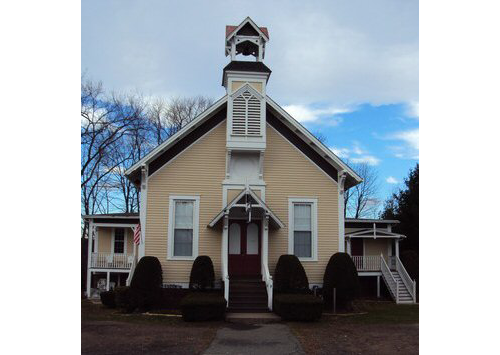Suffield and the KKK
Ku Klux Klan robe, c. 1928 Credit: The Amistad Center for Art & Culture at the Wadsworth Atheneum Museum of Art, Hartford.
As an October baby, I have always loved everything about the fall and Halloween. In particular, I have always loved the stories of ghosts and monsters, especially those that are purported to be “real”. And while it is fun today to try to figure out for yourself if a place is haunted or not, 100 years ago, Suffield was facing a real specter, the specter of the 2nd Ku Klux Klan (KKK).
So how did a racist secret society like the KKK come to operate in Suffield? To better understand that, we need to understand the changes that were occurring in our region during the first quarter of the 20th century and a brief history of the KKK itself.
The Connecticut River Valley at the beginning of the 20th century was a prosperous place. Economic opportunity existed in almost every sector of the economy, from manufacturing at places like Colt and United Aircraft, to banking and finance at firms like Travelers or the Suffield National Savings Bank to agriculture where farmers were producing crops from corn to tobacco. A chief driver of the growth in these industries was the ample labor supply provided by a wave of new migrants streaming into the region.
Table from a Census Bureau Report for the state of Connecticut for the 1920 census showing the increase in both black and foreign born persons in the state compared with the 1910 Census
So who were these people? They largely fell into three groups, immigrants from eastern Europe, immigrants from southern Europe and African American migrants from the south. These groups all shared the common goal of accessing greater economic opportunities and more political freedom than they had in their places of birth. In the case of Suffield, it was mostly Polish and African American workers coming to work in the tobacco industry that contributed to the demographic shift occurring in town. This shift triggered a xenophobic backlash that created conditions that enabled the growth of the KKK in town.
As the composition of the population of the region shifted, White Anglo-Saxon Protestant (WASP) people began to become uneasy with their new neighbors, especially as they began to exercise their new found political rights. They feared that these new inhabitants were unfit to participate in American democracy either because they came from a place where they were disenfranchised or their Catholic or Jewish beliefs were incompatible with American republican values.
In reaction to this perceived threat to American values, the second Ku Klux Klan was formed in Georgia in 1915. It was inspired by the movie The Birth of a Nation which glorified the first KKK which was formed to resist the efforts of Reconstruction in the aftermath of the Civil War. The second KKK was at first confined to the states of the old Confederacy just like the first KKK. This all changed in the early 1920s when the Klan’s leaders partnered with an advertising firm to increase the group’s reach.
Theatrical Poster for The Birth of a Nation
It was not long after this advertising blitz that Suffield had Klan activity. In 1922, a series of meetings was held at the West Suffield Congregational Church where the advertised topic was current events. The goal of the misleading advertising was to draw prominent citizens to the meetings to try to get them involved in the KKK to lend the organization legitimacy. At the second meeting, the real purpose of the meetings was revealed and the membership pitch was made. It is unknown how many joined the group at this point.
By 1924, the Klan had established a strong presence in the Connecticut River Valley. The Providence Journal reported that it was unsafe for non-Protestants to travel in some areas at night in between Springfield and New Haven.
By August of 1925, the KKK was at the height of its power and Suffield had its first Klan meeting that was open and advertised as such for the general public. The Windsor Locks Journal reported that about 40 people met at Mapleton Hall to listen to a speaker explain the benefits of joining the Klan. At the end of the meeting it was reported that some in attendance joined. The Springfield Republican noted that “nothing objectionable” was said at the meeting, but future events seemed to suggest otherwise.
Mapleton Hall: Credit Suffield Players
Cross burnings began to occur all over town. Some occurred on public property like on West Suffield Mountain and were intended to remind the populace of the Klan’s presence in the community and as an advertisement to recruit new Klansmen. Other crosses were burned at the homes of the Klan’s enemies as an intimidation tactic. However, at least one brave soul demonstrated that not everyone was scared.
Burning Cross from the 1920s: Credit British Pathe
Margaret (McCarty) Chew was an active member of the Suffield community, an immigrant, and a devout Catholic. She was everything the Klan feared and hated, so naturally they decided to try to terrorize her by burning a cross on her lawn. Whether she was tipped off or she just happened to be vigilant that evening is unknown, but once she detected the men in her yard she sprang into action. Mrs. Chew grabbed a hot fire poker and charged into the night swinging at the Klansmen. After sustaining some serious burns, the KKK aborted their cross burning attempt and fled into the night. By standing up to the Klan, Margaret Chew revealed the KKK for what it really was; a group of cowardly bullies that fled when they were defied.
1927 marked the last recorded cross burning in Suffield. By 1928 the Klan had disbanded in Suffield. It followed a regional trend that saw the Klan all but disappear from New England by the end of the 1930s. While there were many factors that contributed to the decline of the KKK in the Connecticut River Valley, a large part of that decline was due to the courageous resistance by people like Margaret Chew.
Bibliography
Alcorn, Robert Hayden. A Biography of a Town: Suffield Connecticut 1670-1970. Suffield, Connecticut : 300th Anniversary Committee of the Town of Suffield, 1970.
Richard, Mark Paul. Not a Catholic Nation: The Ku Klux Klan Confronts New England in the 1920s. Amherst, MA: University of Massachusetts Press, 2015.
.“Ku Klux Cross Burned at Suffield .” Springfield Republican , April 19, 1927.
“Mrs. Margaret Chew .” The Springfield Union, May 30, 1968.
“Suffield: Suffield Center.” The Windsor Locks Journal , September 4, 1925
Washington D.C. . Edited by William C Hunt, Fourteenth Census of the United States: 1920 Bulletin: Population Connecticut § (1920). https://www2.census.gov/library/publications/decennial/1920/bulletins/demographics/population-ct-composition-and-characteristics.pdf.






